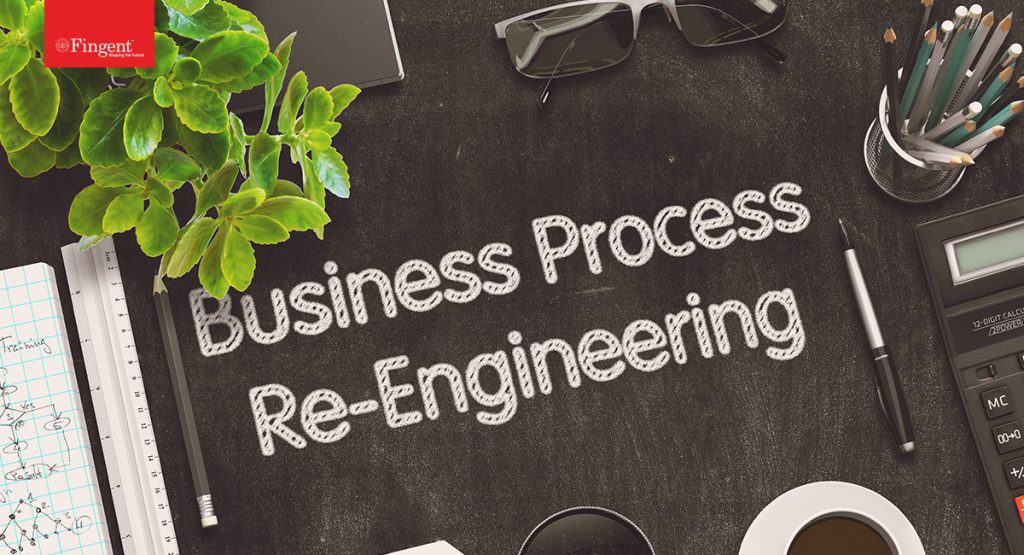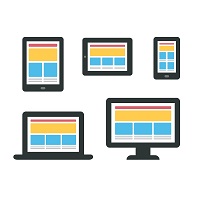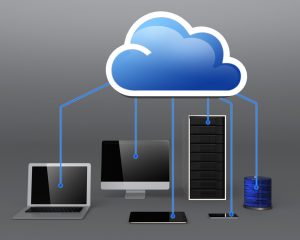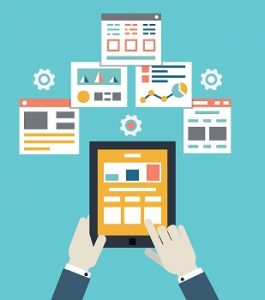Tag: legacy applications
Enterprise Application Modernization is a critical need in a rapidly evolving digital world.
Application Modernization helps drive smart decisions and efficient processes. It also offers businesses a competitive edge. Organizations achieve many digital transformation goals through modernization projects. Application Modernization may be the only way to overcome handicaps baked into existing software that has become difficult to extend, enhance, or maintain.
This blog will take you through the top benefits of Enterprise Application Modernization and the top trends in application modernization to look out for in 2025. But first, let’s look at what Application Modernization means.
What is Application Modernization?
Application Modernization, also known as legacy modernization, is the process of updating an organization’s software to take advantage of newer frameworks, languages, libraries, and infrastructure. Modernization could involve migrating software to a public, private, or hybrid cloud if a business employs on-premises applications. It frequently means employing cutting-edge technologies like cloud computing, microservices, containers, and artificial intelligence. Market Research Future (MRFR) predicts that the market for Application Modernization services will reach $24.8 billion by 2030, expanding at a 16.8% CAGR from 2022 to 2030.
Wondering if you can modernize your Enterprise Application without disrupting your daily operations? Our experts have got your back!
The Top Benefits of Application Modernization
Application Modernization provides several benefits to companies, including increased efficiency, agility, and competitiveness. Here are some of the principal advantages:
1. Scalability: Modernized apps are more easily scaled to support higher transaction volumes, data sizes, and more users – allowing enterprises to adjust to changing business requirements quickly. Scalability future-proofs applications. Moreover, it is easier to find skilled developers to maintain an application when the software has been modernized.
2. Integration With New Technology: Application Modernization is an opportunity to take advantage of new technologies like Cloud Computing, Microservices, Containerization, and Artificial Intelligence – advances that can extend an application’s capabilities and performance more rapidly or at lower cost.
3. Enhanced Security: Legacy programs may include security flaws, and legacy application modernization enables firms to apply the most recent security protections. This helps to secure sensitive data and lowers the chance of security breaches.
4. Agility And Quicker Time-To-Market: Modernized apps isolate functional elements better. That means code changes have fewer unintended side effects, making the software more flexible and adaptable and enabling businesses to react swiftly to market changes and client needs. This agility helps to accelerate development cycles and reduce time-to-market for new features or products.
5. Competitive Advantage: Organizations that engage in Application Modernization get a competitive advantage by exploiting cutting-edge technology and keeping up with industry developments. This may result in more market share, happier customers, and more favorable placement in the industry.
Read more: Why Top Companies Are Investing in Application Modernization
Top Application Modernization Trends To Lookout For In 2025
There’s no doubt that Enterprise Application Modernization is becoming inevitable. To stay future-ready, modern businesses must stay updated on the latest trends in application modernization. Here’s an attempt to clarify what companies must watch out for this year to stay relevant in the market.
1. AI-Driven Application Modernization
Combining Artificial Intelligence (AI) with Machine Learning (ML) has become an extremely popular trend. Modernized applications use intelligent elements to improve decision-making, automation, and user experiences. Enterprises are utilizing AI to accelerate and enhance modernization, incorporating intelligent code analysis, automated modification, AI-powered testing, and performance optimization.
2. Microservices
Microservices transform the way we develop apps. Instead of having a single large piece of code, it can be divided into smaller portions that can be modified separately. The transition to microservices architecture and API-centric programming enables better flexibility, scalability, and agility. It encourages flexible development, making it easier to update and maintain individual components of an application without impacting the overall system.
3. Low-Code/No-Code Revolution
The growth of low-code and no-code platforms has eased the application-building process by allowing non-developers to construct apps with little coding. There are several platforms that allow non-developers to create applications with minimal coding work. These platforms let app developers employ visual interfaces and pre-built components to speed application delivery, cut development costs, and enable organizations to adapt quickly to changing market needs.
4. DevOps For Security
The DevOps approaches, such as CI/CD pipelines, are increasingly used to modernize applications. DevOps and automation decrease human interference and reduce human mistakes, increasing operational efficiency and lower costs. The correct DevOps consultancy, tools, teams, and skills enable firms to modernize outdated code in accordance with business goals and requirements. By including security principles throughout the DevOps journey, companies ensure that the highest level of security stays at the core of their updated apps, protecting against security risks.
5. Cloud Native Paradigm
Organizations are rapidly embracing cloud-native architectures, which use cloud services and platforms. This trend is anticipated to continue through 2025. Businesses may gain unmatched scalability, flexibility, and resilience by combining cloud services, containers, and management platforms, allowing for seamless app modernization in a cloud-native environment.
6. Blockchain Integration
Blockchain integration will be a major trend in 2025 for safe and transparent data management. This decentralized method eliminates delays, mistakes, and fraud while increasing accountability and transparency. Businesses may improve security and transparency by integrating blockchain technology into their data exchanges. It is frequently used in applications requiring digital currencies, supply chain management, and data security. It’s also useful for applications that require tamper-proof records and secure transactions.
7. Enhanced Security Systems
This trend is becoming increasingly important as regulatory environments get more complex, mandating an intricate approach to compliance. Organizations may protect their apps from illegal access, data breaches, and cyber threats by implementing effective security policies. Multi-factor authentication, encryption, continuous monitoring, and other security features improve the security of updated systems. This approach enables firms to quickly protect sensitive data, foster user confidence, and assure compliance with data protection rules.
Don’t allow legacy systems to sloth your business growth. Plan your App Modernization success journey with us!
Application Modernization with Fingent
Application modernization is a foundational part of a digital transformation effort. But, it can be a daunting task. With the right technology partner, you can tackle it with confidence. Fingent can assemble a project team to deliver the cost-effective approach you need for your modernization effort, from project planning to production rollout. Let’s talk about it.
Stay up to date on what's new

Featured Blogs
Stay up to date on
what's new



Talk To Our Experts
Identify the best approach to legacy system modernization
With changing customer behavior, enterprises have changed their norms and business applications. Now, retailers have to fulfill orders in a multichannel, multitouch eCommerce environment; consumer banks have to provide secure and user-friendly apps, and travel brands have reconfigured their approach to stay relevant in the face of disruptors.
All these changes require legacy system modernization.
What are legacy systems?
A legacy system may be different for each company, depending on their business. While many organizations prefer to leverage new software tools and run them on old systems, others update their applications one at a time. That said, few companies are still using both old software and old systems.
Read more: Four Ways to Future-Proof Legacy Applications
Legacy systems are considered old when the software fits the early 2000s, not 2020-21. However, not all legacy software or systems are defined solely according to their age.
What is legacy systems modernization?
Simply put, modernization means updating all or some of the IT stack to enhance your business processes and goals.
However, here are three definitions that will help you understand that legacy system modernization is more than just updating the system.
- Legacy software: The application(s) that your business depends on from the last year to the past decade or more.
- Legacy software modernization: Replacing and updating all inefficient systems, processes, and applications either partly or entirely.
- Re-platforming: Modernization begins with the platform on which your business applications are built. Moving your e-commerce platform from Shopify to Magento is an example of re-platforming.
There’s no denying that business leaders drive innovation at their companies. But they need the latest technologies to enable and support this innovation. They need fast applications, systems that support connectivity, and platforms that bring all these together. Most older IT companies fail to meet these modern needs. So, legacy system modernization is a must in such cases.
That said, digital transformation has pushed application leaders to find effective ways to modernize legacy systems.
Why do you need legacy system modernization?
Legacy system modernization is more than just updating the system. It is about bringing the entire organization to meet the digital environment.
Some of the reasons to consider legacy modernization are:
- It helps create and maintain a competitive advantage by building a solution that will help you stay ahead of competitors.
- Provides reliable processes with reduced risks, improves the system’s functioning, and improves performance.
- Ensures satisfied customers and happier employees by meeting UX and performance standards.
Watch video!
- It helps you scale in the future by transforming your IT stack into an agile platform for future change.
- Secures your IT infrastructure from internal security breaches and external threats
- From accounting software to CRMs, legacy systems introduce simpler integration with several new enterprise software used by various businesses.
- Addresses the financial inefficiencies of legacy system
- It helps realize growth opportunities, exceed customer expectations, and gain new customers by staying ahead of the enterprise software curve.
Have a look at some of the points in more detail.
Company finances
Integrated, up-to-date, and user-friendly software and systems will save your company on downtime, transactions, and more. For instance, Javelin Strategy & Research observed that mobile and online banking transactions cost only $0.10 while offline processing cost around $4.25 for financial institutions.
Older software and systems can help you spend less on technology, but they end up incurring other overhead expenses.
Software integration
Most organizations rely on third-party APIs to realize maximum enterprise value. For example, Zillow, a real-estate listing site, relies on the Google Maps API for full functionality.
Making sure your new software system is ready for integration will help meet the expectations of your customers, employees, and stakeholders.
Gartner recommends how to approach legacy modernization
Here is a three-step evaluation process provided by Gartner on how to approach the legacy system’s modernization.
Step 1: Use six drivers to evaluate your legacy systems
There are six main drivers for the modernization of your legacy system. These are the issues or concerns that the legacy application has created due to its architecture, functionality, or technology.
Three of these drivers are from a business perspective, such as business value, business fit, and agility. So, if your legacy system does not meet the new requirements, it will have to be modernized to fit properly and should be updated to provide more business value. Systems that are not agile enough to meet digital business demand are more likely to risk liability.
Step 2: Evaluate modernization
Once you identify the problem and select the opportunity, look at the modernization options. Here are seven options provided by Gartner. These options are ranked based on the ease of implementation- the easier it is, the less risk and impact it will have on the system and the business processes, the difficult, the more risk and impact it will have.
- Enhance and extend the application features by encapsulating its data and functions by making them available via an API.
- Be it cloud, virtual or physical, rehost the application component to other infrastructure without changing its code, functions, or features.
- Make minimal changes to the code but not the code structure, features, or functions to migrate to a new runtime platform.
- Restructure and optimize the existing code but not its external behavior to improve non-functional attributes and remove technical debt.
- Modify the code materially to shift it to new application architecture and exploit newer capabilities.
- Rebuild the application component from scratch while retaining its scope and specifications.
- Eliminate the former application and replace it while taking into account the new requirements and needs.
Step 3: Select a modernization approach that has the highest effect and value
The last step is to choose the modernization approach by mapping the seven modernization options concerning their effect on architecture, technology, functionality, costs, and risks.
It is important to weigh all the options to identify the extent to which they will all have the desired effect with less effort and maximum positive impact.
Read more: Business Process Re-engineering: Facing Crisis with Confidence
How can Fingent help update your legacy system?
Whether you are looking to re-architect your enterprise software or re-platform your entire system, or simply looking for new solutions that integrate with what you have going, we have you covered. We offer business process re-engineering and platform modernization services.
With expertise in various industries and a full-cycle in-house software development team specializing in legacy modernization, we can make your entire process efficient and personalized. Talk to our expert to know more about this.
Stay up to date on what's new

Featured Blogs
Stay up to date on
what's new



Talk To Our Experts
Technology is in a continuous state of flux, and software gets outdated sooner rather than later.
For all the advancements in technology, about 70% of a typical global corporation’s global transactions are still running on legacy applications, such as COBOL. However, today’s demanding users seek a rich experience that leverage the latest technological developments, and prefer accessing applications through devices of their choice, mostly mobile. Enterprises are now looking at future-proofing legacy applications as a way out of the imbroglio. Gartner estimates global enterprise application software spending to touch $201 billion by 2019, with modernization, transformation, and expansion in functionality of software driving much of the growth.
Here are the top ways to future-proof legacy applications, and derive maximum bang for the buck.
Create HTML 5 Version of the Software
Today’s software need to work on everything from desktops to smartphones, and from laptops to tablets. An HTML 5/CSS3 version of the application is a sure-shot and easiest way to facilitate such requirement, and future-proof the software.
HTML 5 is as resilient as it comes, as it works across all platforms. The use of web-based terminal emulators allows organizations to offer employees access on any device, anywhere, using any browser.
Developers would do well to discard applets, plug-ins, and other device-specific software. Eliminating the need for client side, a device-specific software makes the enterprise immune to browser or system requirements, or even device types.
Side-by-side, developers also need to adopt the declarative programming paradigm and enable faster development. Agile software, easy to change, depending on business needs, serves future needs best.
Migrate to the Cloud
Today’s users tend to access applications erratically, often creating spikes in usage. They are also rarely tied up to a location. Future-proofing applications in such scenarios require catering to flexible demand, and the ready-made solution is hosting application in the cloud. Cloud-based software not just offers anywhere, anytime access, but also makes it possible to scale up resources, to cater to demand.
Any on-premise application that does not have cloud portability or native mobile functionality is obsolete, regardless of when it was developed. The cloud is now all-encompassing, and even sensitive information, hitherto considered too risky for the cloud, is increasingly making way to it.
A cloud-based software requires a solid, reliable database that can scale easily and integrate seamlessly with other components, such as Apache Hadoop. Relational database such as MySQL offer easy manipulation of data, and several intuitive features such as replication, and remain a popular choice. However, the latest schema-less NoSQL databases such as MongoDB offer unprecedented flexibility in holding any type of data.
Integrate Applications
In an era where IoT is slated to run supreme, the future of applications lies in continued integration, with other applications and devices. Enterprises would, for instance, do well to integrate web traffic and sales management applications. However, creating bespoke integrations is time-consuming, costly and may cause application instability. The way forward is to build standards-based web services in double quick time, using application development toolset.
Immunize Against Skills Shortage
The ever-changing technology means that old skills soon become obsolete. For instance, thick-client applications running on UNIX-based workstations and later on PCs were dominant in the enterprise space not too long ago, but is now archaic and totally obsolete, with hardly any developer available to work on it. Enterprises can future-proof the disruption caused by original developers moving on by opting for solutions that use common skillsets. A case in point is .NET toolsets that facilitate modernization of legacy applications, condense multiple screens into a single web page, create web services that integrate with other business applications, and more, all done without changing the underlying code.
Enterprises can also try their luck harnessing citizen developers to overhaul their legacy applications, as a strategy to overcome skill shortage. Citizen developers are super-users who by dint of living with the software, knows it inside out, and remain best placed to improve it.
The use of development studio, relying on a wizard based environment, using graphical navigation rather than keyboard shortcuts, automating common tasks and more are some other ways to circumvent the skill shortage, and future-proof legacy applications.
Modernizing legacy applications rank high in the priority of CIOs. A Gartner survey reveals 45% of respondents considering application modernization of installed on-premises core enterprise applications among their top five priorities, and another 41% of respondents regarding extending capabilities of core enterprise applications among their top five priorities.
The task of future-proofing legacy application is however challenging, and run the risk of disrupting the enterprise if not executed properly. It pays to partner with us and leverage our knowledge of the latest IT architecture, and our expertise in making legacy systems more agile and efficient. We help you future-proof your legacy applications, without disrupting your ecosystem. Your investment in the project will soon pay back for itself in terms of sustained savings and improved productivity.
Stay up to date on what's new

Featured Blogs
Stay up to date on
what's new



















